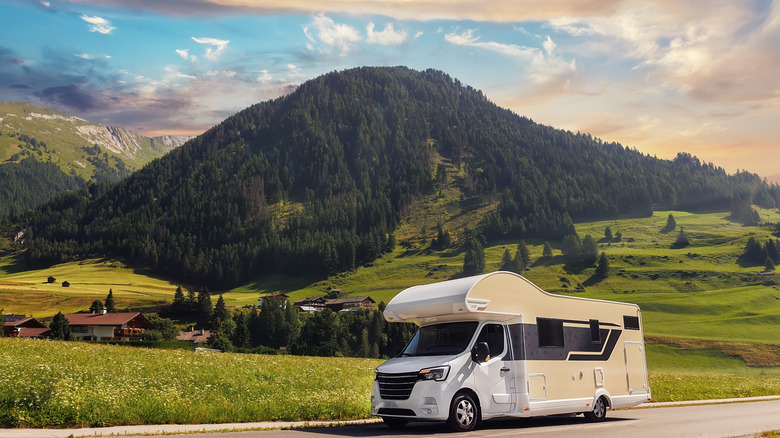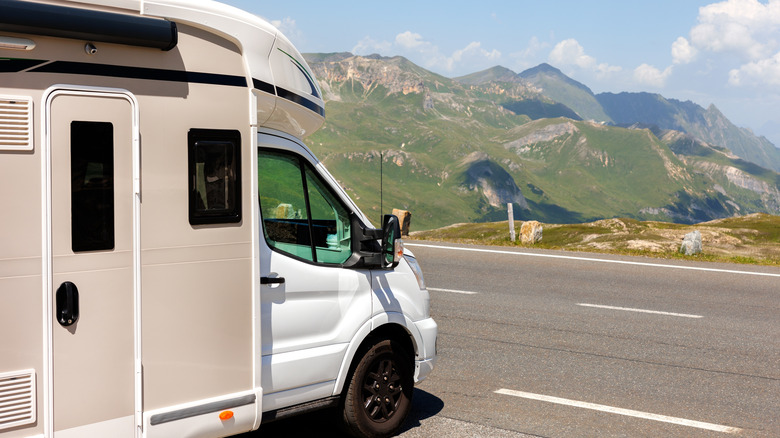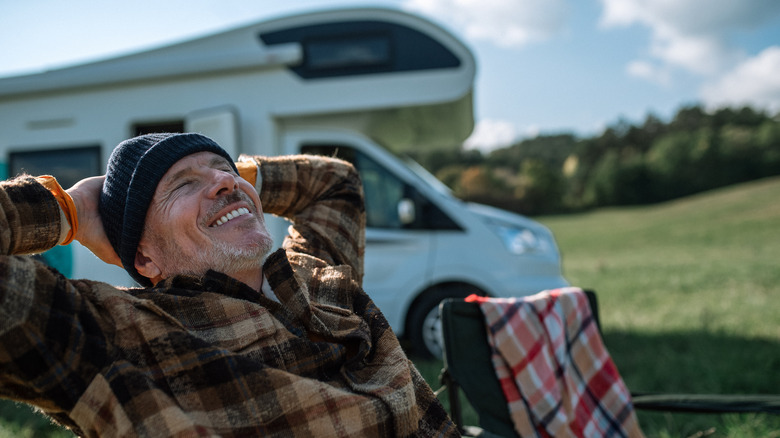This Crucial Strategy Helps Your RV Tackle Challenging Mountain Terrain Safely
Driving an RV through winding roads on a mountain can be quite thrilling, but it can also be nerve-wracking, especially when gravity hits and the brakes begin to overheat. However, one crucial strategy can help you stay safe and in control, and keep your brakes from smoking. Ask any seasoned RVers and they'll tell you, it's none other than downshifting — an essential technique that many travelers tend to overlook.
Downshifting is a way to slow down your vehicle without using the brake pedal. It works by shifting into a lower gear and easing off the accelerator. This trick helps you avoid placing so much stress on your brakes, thereby reducing the chance of brake fade. If your RV has a "Tow/Haul" mode, then it'll be very useful in this case – especially if your RV is an automatic — as it can be instrumental in making gear shifts easier and improving the stability of your rig.
Because many RVs tend to struggle with steep inclines, gear management and knowing how your gears work is essential when ascending. As such, downshifting is the perfect technique to aid your uphill driving. Changing your gear to a lower one helps your rig to maintain a steady speed, while you also get better control and keep the engine from overheating. You might further reduce the load on your engine during the climb by turning off the air conditioning. Still, if it turns out that the engine begins to heat up too much, your best bet is to pull over and allow it to cool down. Remember that you're not in a race. Getting to your destination with your RV — and you — safe and sound is the most crucial thing.
Driving downhill in your RV
Going up the mountain in your RV is an uphill task — literally! And coming down? That's where it gets even more dangerous, because descending from a mountain in your vehicle puts more strain on the brakes. Worse still, if you're not careful, a brake failure might be just around the corner. So making use of a lower gear shift is still the right technique to prevent your brake system from wearing out.
In addition to downshifting, intermittent braking is another effective method to help you overcome the sharp road curves and steep grades when driving your RV downhill. Instead of constantly pressing the brakes, apply firm pressure for just a few seconds, then release the brakes and let the system cool. This will let you shift to a lower speed in an automatic RV. By successfully combining downshifting and intermittent braking, you can safely navigate your way without damaging your brakes.
Things could get even easier for you if your RV comes with an engine retarder or an exhaust brake, which are typically designed to prevent vehicles from moving too fast when going downhill. These systems can help your engine slow down your rig without needing to touch the brakes. If your RV is equipped with these, get yourself familiar with how to use them before getting on the road.
Planning for your mountain RV trip
While it's important to plan for a successful RV trip, it is even more crucial when you're about to take your RV up a mountain. Just as you would prepare yourself for the atmosphere change and potential altitude sickness on the mountain, keeping your RV in its best shape — especially before a trip — is a no-brainer. Of course, the higher the altitude of the mountain range, the harder your rig will have to work. So preparing well ahead is paramount. One of the first things to do is to get necessary information about your route before you hit the road — and not just where to go. Consider the kind of road you'll be driving, in relation to the RV model you're traveling in. For example, while most RVs can handle highways without hassle, only off-road models are capable of attempting bumpy dirt roads.
Also, ensure that key components of your vehicle, such as tires, brakes, and cooling systems, are in optimum condition. Likewise, do not forget to bring essentials, like a tire pressure gauge, wheel chocks, and extra coolants. Tire chains and defrosters could also be useful if you're traveling during cooler months. Essentially, avoid the dangerous act of overloading your RV: Make sure to have with you only what you need, and ditch what you don't need, because every extra pound means more pressure on your engine, and more consumption of fuel.


